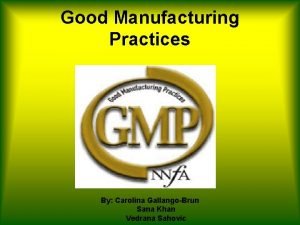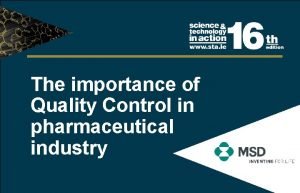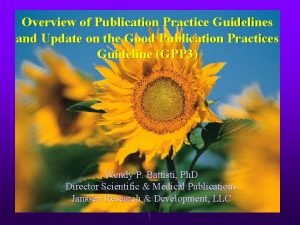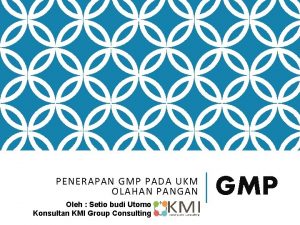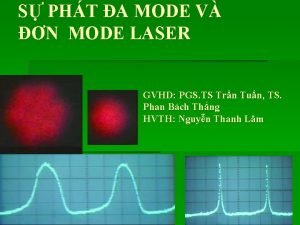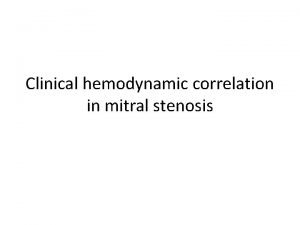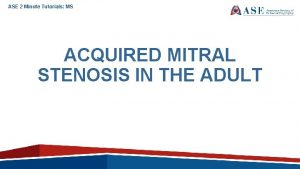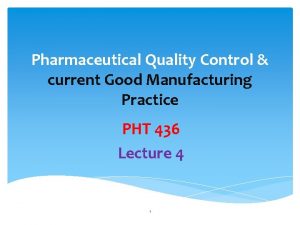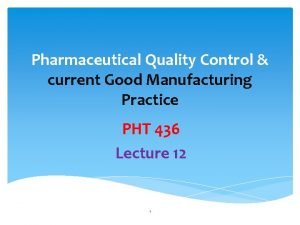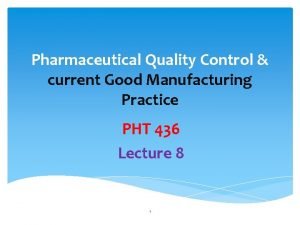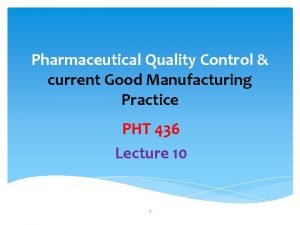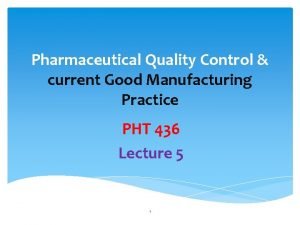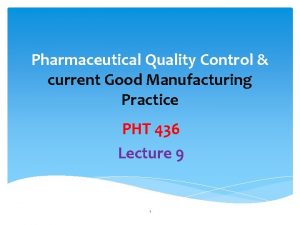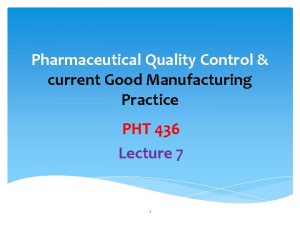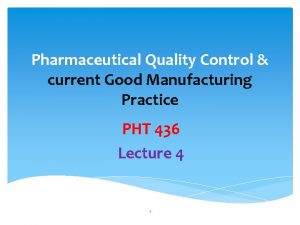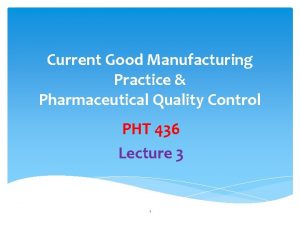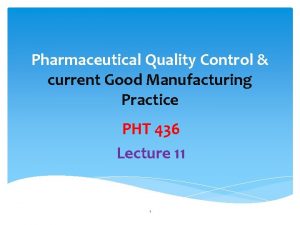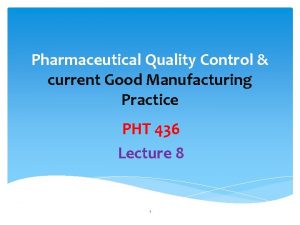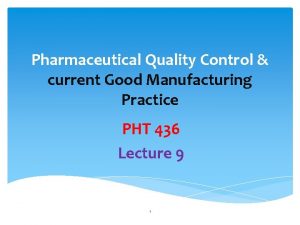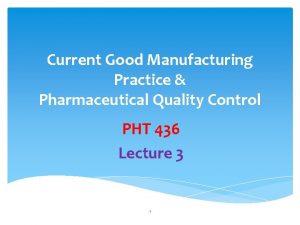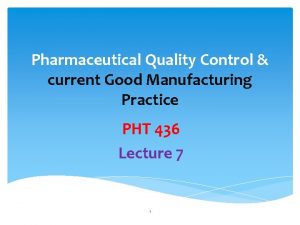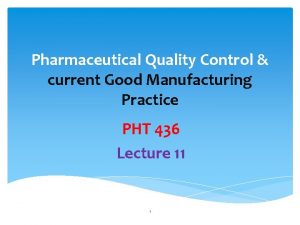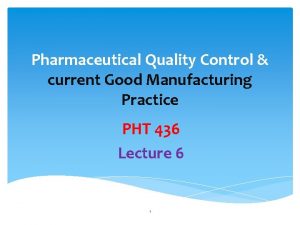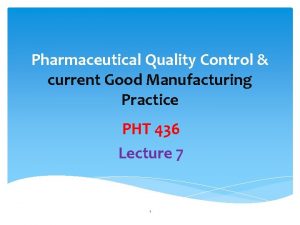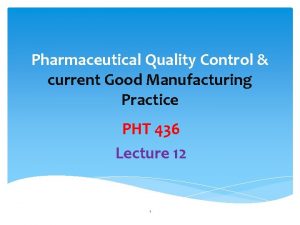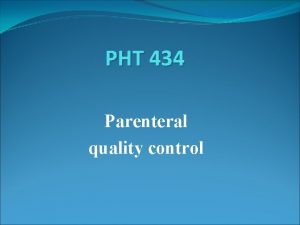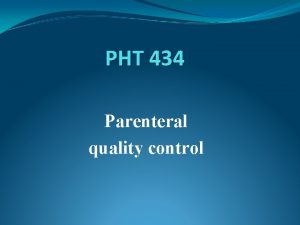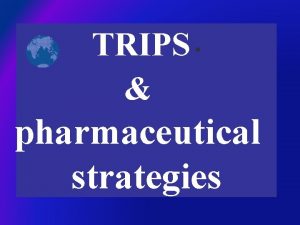Pharmaceutical Quality Control current Good Manufacturing Practice PHT























- Slides: 23

Pharmaceutical Quality Control & current Good Manufacturing Practice PHT 436 Lecture 11 1

Validation 2

Validation • it is the documented act of demonstrating that a procedure, process, and activity will consistently lead to the expected results. • It often includes the qualification of systems and equipment. • It is a requirement for CGMP and other regulatory requirements. 3

The field of validation is divided into a number of subsections including the following: • • Process Validation. Analytical Method Validation. Computer System Validation. Cleaning Validation. 4

Similarly, the activity of qualifying systems and equipment (elements of validation) is divided into a number of subsections including the following: • • • 5 Design qualification (DQ) Component qualification (CQ) Installation qualification (IQ) Operational qualification (OQ) Performance qualification (PQ)

The pharmaceutical industries are concerned about validation because of the following reasons: • Assurance of quality. • Cost reduction. • Government regulation. 6

The validation working party would usually include the following staff members, preferably those with a good insight into the company's operation: • Production Manager : Responsible for manufacturing of batches and review of protocol and report. • Manager QC : Responsible for analysis of samples collected. • Executive QC: Responsible for samples collection and submission to QC. • Manager Maintenance: Providing utilities and engineering support. • Executive Production : Responsible for preparation of protocol and manufacturing of validation batches. • Head of quality assurance : Responsible for protocol authorization and preparation of summary report. 7

Process Validation: • Process validation is defined as the collection and evaluation of data, from the process design stage throughout production, which establishes scientific evidence that a process is capable of consistently delivering quality products. • Process validation is a requirement of CGMPs for finished pharmaceuticals and of the CGMP regulations for medical devices and therefore applies to the manufacture of both drug products and medical devices. • Process validation involves a series of activities taking place over the lifecycle of the product and process. 8

• The FDA has proposed guidelines with the following definition for process validation: - “PROCESS VALIDATION” is establishing documented evidence which provides a high degree of assurance that a specific process consistently produces a product meeting its predetermined specifications and quality attributes. 9

The Process validation activities can be described in three stages: • Stage 1 – Process Design: The commercial process is defined during this stage based on knowledge gained through development and scale-up activities. • Stage 2 – Process Qualification: During this stage, the process design is confirmed as being capable of reproducible commercial manufacturing. • Stage 3 – Continued Process Verification: Ongoing assurance is gained during routine production that the process remains in a state of control. 10

Types Of Process Validation : The guidelines on general principles of process validation mentions four types of validation: A) Prospective validation (or premarket validation) B) Retrospective validation C) Concurrent validation D) Revalidation 11

A) Prospective validation: • Establishing documented evidence prior to process implementation that a system does what it proposed to do based on preplanned protocols. • This approach is undertaken whenever the process for a new formula (or within a new facility) must be validated before routine pharmaceutical production commences. • In fact, validation of a process by this approach often leads to transfer of the manufacturing process from the development function to production. 12

B) Retrospective validation: • Validation of these facilities, processes, and process controls is possible using historical data to provide the necessary documentary evidence that the process is doing what it is believed to do. • It is used for facilities, processes, and process controls in operation use that have not undergone a formally documented validation process. • Therefore, this type of validation is only acceptable for well -established processes and will be inappropriate where there have been recent changes in the composition of product, operating processes, or equipment. • This approach is rarely been used today because it’s very unlikely that any existing product hasn’t been subjected to the Prospective validation process. • It is used only for the audit of a validated process. 13

C) Concurrent validation: • It involves monitoring of critical processing steps and end product testing of current production, to show that the manufacturing process is in a state of control. • It is used for establishing documented evidence that a facility and processes do what they purport to do, based on information generated during actual imputation of the process. 14

D) Revalidation: • It means repeating the original validation effort or any part of it, and includes investigative review of existing performance data. • This approach is essential to maintain the validated status of the plant, equipment, manufacturing processes and computer systems. • Possible reasons for starting the revalidation process include: – The transfer of a product from one plant to another. – Changes to the product, the plant, the manufacturing process, the cleaning process, or other changes that could affect product quality. – The necessity of periodic checking of the validation results. – Significant (usually order of magnitude) increase or decrease in batch size. – Sequential batches that fail to meet product and process specifications. • The scope of revalidation procedures depends on: – the extent of the changes, – and the effect upon the product. 15

Phases Of Process Validation: • Phase 1: Pre-Validation Phase or the Qualification Phase. • Phase 2: Process Validation Phase (Process Qualification phase). • Phase 3: Validation Maintenance Phase. 16

Phase 1: Pre-Validation Phase or the Qualification Phase • It covers all activities relating to product – – – 17 research and development, formulation, pilot batch studies, scale-up studies, transfer of technology to commercial scale batches, establishing stability conditions, storage and handling of in-process and finished dosage forms, equipment qualification, installation qualification, master production documents, operational qualification, process capability.

Phase 2: Process Validation Phase (Process Qualification phase) It designed to verify that: • all established limits of the critical process parameters are valid, • and that satisfactory products can be produced even under the “worst case” conditions. 18

Phase 3: Validation Maintenance Phase • Phase 3 requiring frequent review of all process related documents, including validation audit reports to assure that there have been no changes, deviations, failures, modifications to the production process, and that all SOPs have been followed, including Change Control procedures. • At this stage the validation team also assures that there have been no changes/ deviations that should have resulted in requalification and revalidation. 19

Standard Operation Procedure (SOP) • A SOP contains instructions having the force of a directive, covering those features of operations that lend themselves to a definite or standardized procedure without loss of effectiveness. • SOP can be effective catalysts to drive: – performance improvement, – and improving organizational and operational results. • They assure that processes and manufacture will be done in a similar way and lead always to the expected quality of product. • SOPs must be followed by operators performing the manufacture and the testing of drugs. 20

Standard Operation Procedure (SOP) • The presence of these quality documents is essential when regulatory inspections (e. g. FDA) take place since the most frequent reported deficiencies during inspections are the lack of written SOPs and/or the failure to adhere to them. • The risk of GMP non-compliance is high at organizations with a poor availability of specific SOPs and also if at all they are available the staff or the people for whom they were written are not either following them. • It therefore becomes very important for the personnel to be trained on these SOPs so that they are actually aware of why and how SOPs can play important role in fulfilling the specific regulatory requirements from WHO, FDA, or other national health authorities. 21

A minimum set of Standard Operation / Operating Procedure should be available in CGMP manufacturing areas for the following systems: • • • 22 SOP for quality management SOP for deviation and change control SOP for training and organization SOP for complaints SOP for Recalls SOP for preventive maintenance SOP for the release of raw materials and finished goods SOP for out of specification results SOP for environmental monitoring SOP for material management and goods receipt SOP for pest control

• • • SOP for QC testing SOP for in process control (IPC) testing SOP for document management SOP for the creation of SOPs SOP for corrective and preventive actions SOP format and content of batch records SOP for qualification and validation SOP for setting up product specifications SOP for supplier qualification SOP for internal audit or the self inspection program SOP for lot numbering process 23
 Good manufacturing practices in pharmaceutical industry
Good manufacturing practices in pharmaceutical industry Importance of quality in pharmaceutical industry
Importance of quality in pharmaceutical industry Good publication practice guidelines
Good publication practice guidelines Gmp adalah
Gmp adalah Good manufacturing practices adalah
Good manufacturing practices adalah Yunitron
Yunitron Yunitron
Yunitron Pht logo
Pht logo S'pht
S'pht Ef slope in echo
Ef slope in echo Pressure half time formula
Pressure half time formula Giá pht
Giá pht Giá pht
Giá pht Quality control and quality assurance
Quality control and quality assurance Pmp quality management
Pmp quality management Pmbok quality management
Pmbok quality management Basic quality concepts
Basic quality concepts Manufacturing cost vs non manufacturing cost
Manufacturing cost vs non manufacturing cost Job costing with process costing
Job costing with process costing Manufacturing cost vs non manufacturing cost
Manufacturing cost vs non manufacturing cost Manufacturing cost vs non manufacturing cost
Manufacturing cost vs non manufacturing cost Additive manufacturing vs subtractive manufacturing
Additive manufacturing vs subtractive manufacturing Good thought good words good deeds
Good thought good words good deeds Hi good afternoon how are you
Hi good afternoon how are you
